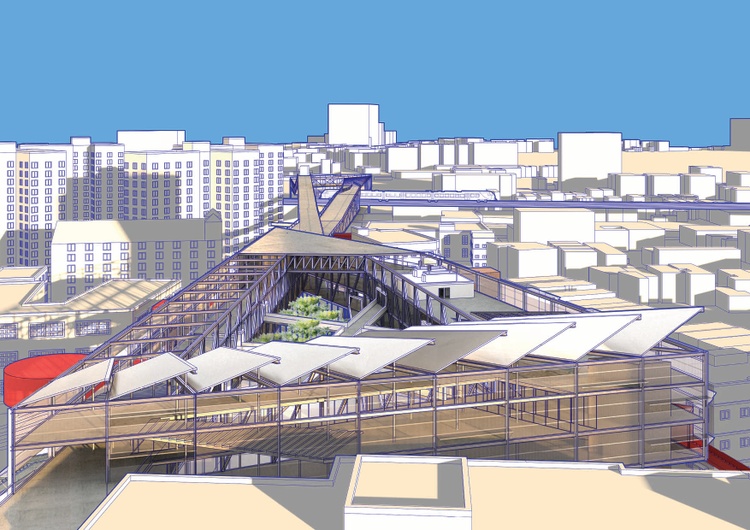An Extensive Overview of Architectural Designs and Their Impact on Modern City Preparation and Advancement
Architectural designs have actually long worked as a mirror to the social worths and technological improvements of their time, playing a vital duty fit modern-day city preparation and development. From the majesty of Neoclassicism to the utilitarian strategy of Brutalism, each style has presented special ideas that affect metropolitan aesthetics and performance. As contemporary challenges arise, including sustainability and area needs, recognizing these historic structures ends up being important. The resulting discussion not only notifies future layout techniques yet also elevates essential questions about the equilibrium between heritage and technology in our progressing urban landscapes.
Historical Summary of Architectural Styles

As societies transitioned through the Center Ages, Gothic architecture arised, defined by its verticality and complex describing, matching the spiritual goals of the period. The Renaissance marked a resurgence of classical ideals, combining art and design in innovative manner ins which affected subsequent styles throughout Europe.

Today, architectural styles proceed to evolve, driven by globalization and sustainability problems, reflecting a dynamic interaction in between heritage and development. This historic overview underscores the significance of style as a mirror of societal evolution and as a catalyst for metropolitan development.
Trick Architectural Styles Explained
The diversity of architectural styles reflects the myriad impacts that form our developed environment, each embodying unique attributes and cultural significances. Key building designs consist of Classical, Gothic, Baroque, Modernism, and Postmodernism, each standing for distinct historical contexts and aesthetic philosophies.
Timeless architecture, rooted in ancient Greece and Rome, emphasizes balance, proportion, and making use of columns (cda architects). In comparison, Gothic style, prospering in the Middle Ages, is defined by pointed arches, ribbed vaults, and flying buttresses, producing an ethereal quality in sanctuaries. Baroque design, arising in the 17th century, is marked by majesty, elaborate embellishment, and a vibrant interplay of light and darkness
Innovation, which acquired energy in the very early 20th century, focuses on function over kind, making use of new materials like steel and glass to produce minimalist frameworks. Postmodernism, reacting versus the austerity of Modernism, embraces eclecticism and historical reference, often including spirited aspects and paradox.

Influence On Urban Planning
In shaping the development of cities, building designs significantly affect urban preparation choices. The option of architectural style commonly determines the aesthetic appeals, functionality, and total character of metropolitan atmospheres.
Furthermore, building designs can affect zoning policies and land use plans. Urban organizers should consider the prevailing basics architectural trends when making areas, ensuring that brand-new growths balance with existing frameworks. This factor to consider fosters cohesive urban landscapes and enhances official site neighborhood identity.
The application of details architectural styles can likewise affect socioeconomic elements within a city. Premium contemporary styles might bring in upscale residents and services, leading to gentrification, while a lot more economical real estate services might prioritize useful and sustainable layouts to fit diverse populations. cda architects. Eventually, the interaction in between building designs and city planning produces dynamic cities that reflect both historic context and modern needs, forming the lived experiences of their inhabitants
Sustainability and Modern Design
Building styles play a crucial function in resolving modern difficulties, specifically in the realm of sustainability. As urban locations increase and environmental problems magnify, contemporary architecture significantly welcomes lasting design concepts that focus on power efficiency, source preservation, and minimal eco-friendly influence.
Contemporary architectural activities, such as biophilic design and eco-friendly architecture, supporter for frameworks that balance with their environments, using all-natural materials and advertising biodiversity. These designs commonly integrate sustainable power resources, such as photovoltaic panels and wind generators, to decrease dependence on fossil fuels and reduced carbon footprints.
In addition, the assimilation of sophisticated innovations, such as clever building systems, boosts energy administration, enhancing source usage while ensuring resident comfort. Innovative water administration strategies, consisting of rain harvesting and greywater recycling, additional contribute to lasting metropolitan environments.
Notably, sustainability expands beyond environmental concerns; it incorporates social and financial dimensions as well. By cultivating area well-being and promoting inclusivity, modern-day architectural styles align with lasting development objectives. The development of architectural techniques continues to form resistant cities that not just satisfy the requirements of the present however likewise protect the future for generations to come.
Area Interaction in Style
Area engagement in go to the website style works as an important bridge between engineers and the populations they serve, making sure that the constructed environment reflects the requirements and desires of its users. This joint process invites neighborhood members to contribute their insights and preferences, fostering a sense of ownership and obligation toward the spaces they inhabit.
Efficient neighborhood engagement employs different techniques, such as workshops, studies, and public forums, to gather diverse viewpoints. These methods promote a two-way discussion, allowing engineers to understand local contexts while equipping citizens to voice their worries and wishes. This inclusivity not only enhances the design quality yet likewise promotes social equity by dealing with the special challenges faced by marginalized groups.
Moreover, area interaction can cause innovative options that could not arise in a conventional style procedure. By incorporating regional understanding and cultural worths, engineers can produce areas that resonate even more deeply with users, boosting usability and sustainability. Eventually, focusing on community engagement in layout procedures causes environments that nurture social interactions, support well-being, and enhance neighborhood ties, therefore playing a pivotal duty fit modern-day urban landscapes.
Final Thought
Building designs have actually greatly influenced modern-day city planning and advancement, showing developing social and technological contexts. The combination of historic looks with modern requirements cultivates city atmospheres that prioritize sustainability and neighborhood interaction. As cities remain to grow and adjust, the continuous discussion in between architectural heritage and modern-day layout concepts will certainly remain essential in creating inclusive, vibrant rooms that boost high quality of life and advertise social equity. The future of urban advancement hinges on this harmonious balance.